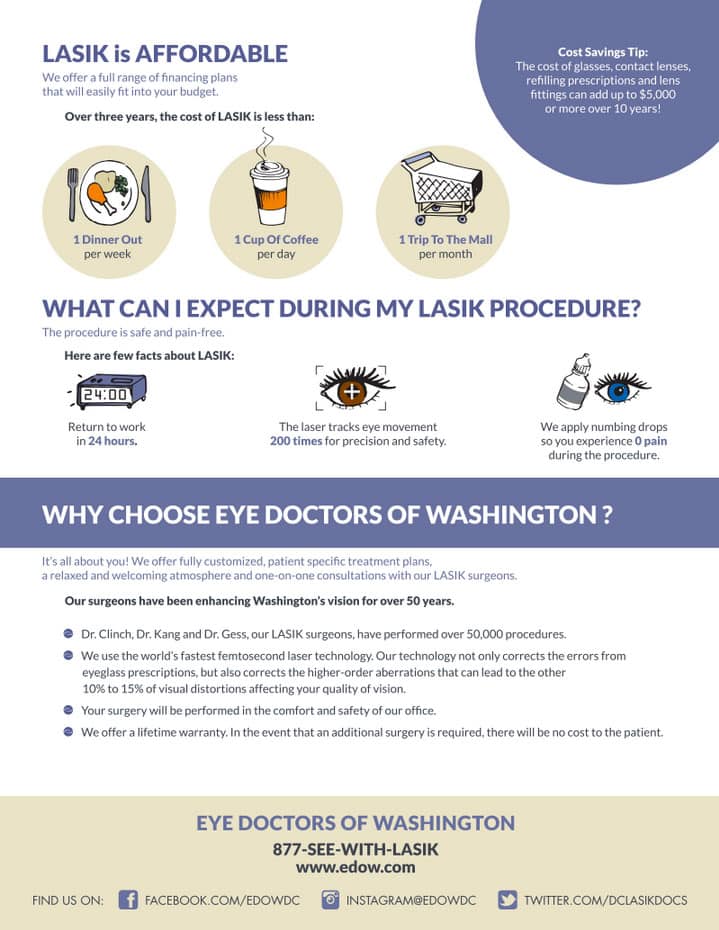How Does SMILE Eye Surgery Compare To LASIK And PRK?
How Does SMILE Eye Surgery Compare To LASIK And PRK?
Blog Article
Team Author-Weber Copeland
If you've been thinking about SMILE eye surgical treatment, you might wonder exactly how it compares to LASIK and PRK. Each treatment has its very own collection of advantages and considerations. From quicker recuperation times to possible dangers, there are vital distinctions you should understand prior to making a decision. Understanding Custom LASIK Cost will certainly aid you make an educated option that straightens with your certain demands and expectations. Interested to understand even more concerning just how these procedures contrast in detail? Keep on checking out to gain an extensive understanding of SMILE, LASIK, and PRK.
SMILE Eye Surgical Procedure Summary
If you're thinking about SMILE eye surgery, you'll find it to be a minimally invasive treatment with a quick recovery time. During SMILE (Tiny Cut Lenticule Extraction), a laser is made use of to create a small, precise incision in the cornea to get rid of a little item of tissue, reshaping it to fix your vision. This varies from LASIK, where a flap is developed, and PRK, where the outer layer of the cornea is entirely eliminated.
Among the key advantages of SMILE is its minimally intrusive nature, leading to a faster healing process and less pain post-surgery. The recuperation time for SMILE is reasonably fast, with many individuals experiencing boosted vision within a day or more. This makes it a preferred choice for those looking for a convenient and efficient vision improvement treatment. Additionally, https://www.ophthalmologytimes.com/view/ida-creating-challenges-for-ophthalmologists-patients has been shown to have a reduced threat of completely dry eye disorder compared to LASIK, making it a desirable alternative for individuals worried concerning this prospective negative effects.
Differences Between SMILE, LASIK, and PRK
When comparing SMILE, LASIK, and PRK eye surgical procedures, it is essential to understand the unique techniques used in each procedure for vision improvement.
SMILE (Little Cut Lenticule Extraction) is a minimally intrusive treatment that includes producing a little incision to remove a lenticule from the cornea, improving it to remedy vision.
LASIK (Laser-Assisted In Situ Keratomileusis) includes creating a slim flap on the cornea, making use of a laser to improve the underlying cells, and afterwards repositioning the flap.
PRK (Photorefractive Keratectomy) removes the outer layer of the cornea before improving the cells with a laser.
The primary distinction hinges on the means the cornea is accessed and dealt with. SMILE is flapless, making it an excellent option for people with slim corneas or those associated with call sports. LASIK uses fast aesthetic recovery as a result of the flap production, however it may position a greater risk of flap-related difficulties. PRK, although having a much longer healing period, prevents flap-related concerns completely.
Comprehending these variances is important in picking the most ideal procedure for your vision modification needs.
Advantages And Disadvantages Comparison
To evaluate the benefits and downsides of SMILE, LASIK, and PRK eye surgical procedures, it's vital to think about the details advantages and prospective constraints of each procedure. SMILE surgical procedure provides the advantage of a minimally intrusive treatment, with a smaller incision and possibly quicker recuperation time compared to LASIK and PRK. It also reduces the danger of completely dry eye post-surgery, a common side effect of LASIK. Nonetheless, SMILE might have constraints in treating greater levels of nearsightedness or astigmatism contrasted to LASIK.
LASIK surgery provides fast visual healing and very little discomfort during the treatment. It's very effective in dealing with a vast array of refractive errors, consisting of myopia, hyperopia, and astigmatism. Yet, LASIK brings a risk of flap complications, which can affect the corneal framework.
PRK eye surgical procedure, while not as prominent as LASIK, prevents creating a corneal flap, minimizing the threat of flap-related issues. It's suitable for individuals with thin corneas or irregular corneal surface areas. Nonetheless, PRK has a longer healing time and might entail a lot more discomfort throughout the healing procedure.
Verdict
So, when it involves selecting between SMILE, LASIK, and PRK, consider it like picking the best set of footwear. SMILE is like a smooth, comfortable set of tennis shoes - quick and easy.
LASIK is much more like fashionable high heels - flashy and quick, but with some prospective dangers.
PRK is like durable treking boots - reputable and durable, but needing a bit even more effort and time.
Eventually, the most effective selection relies on your individual demands and preferences.
